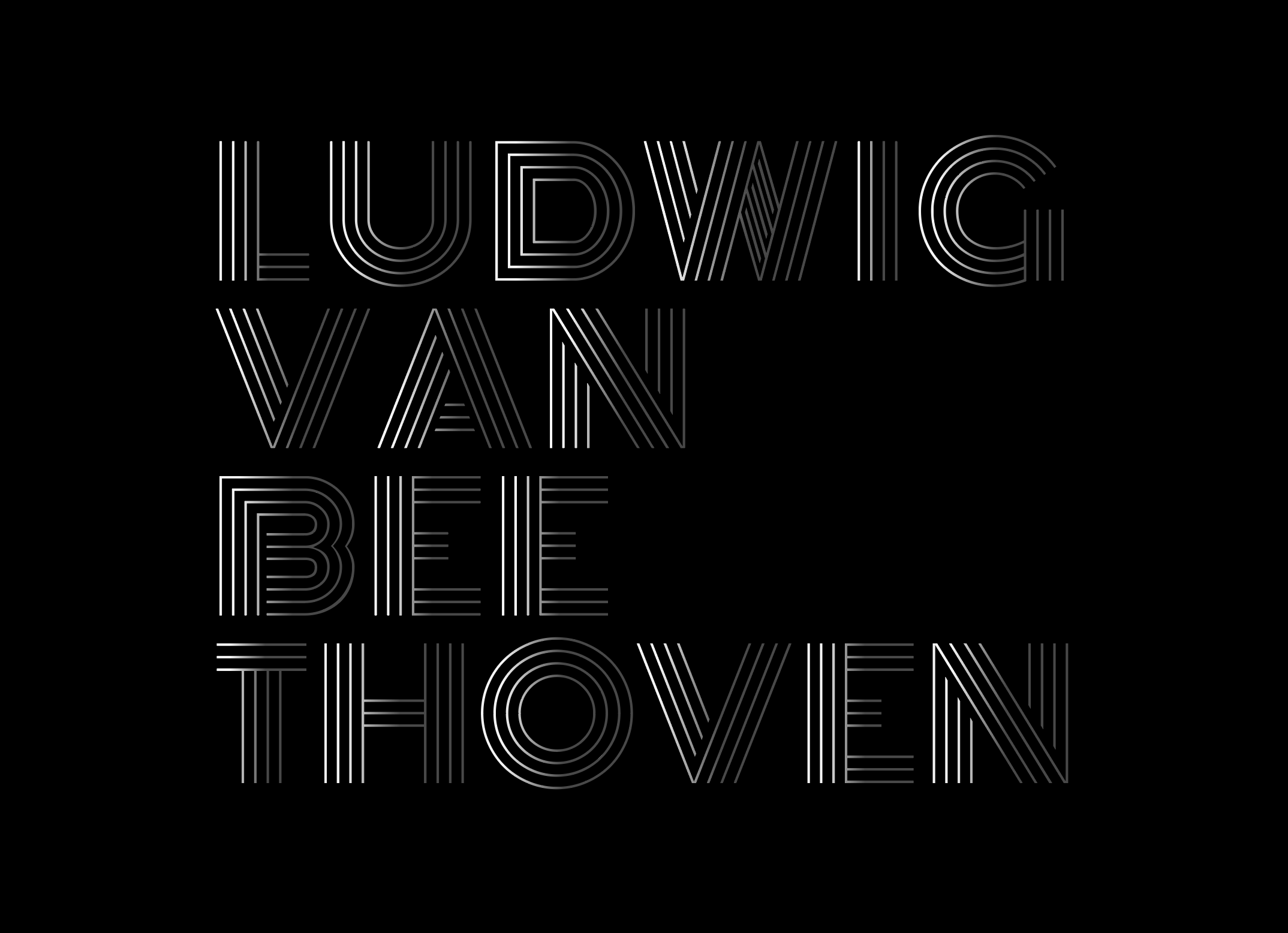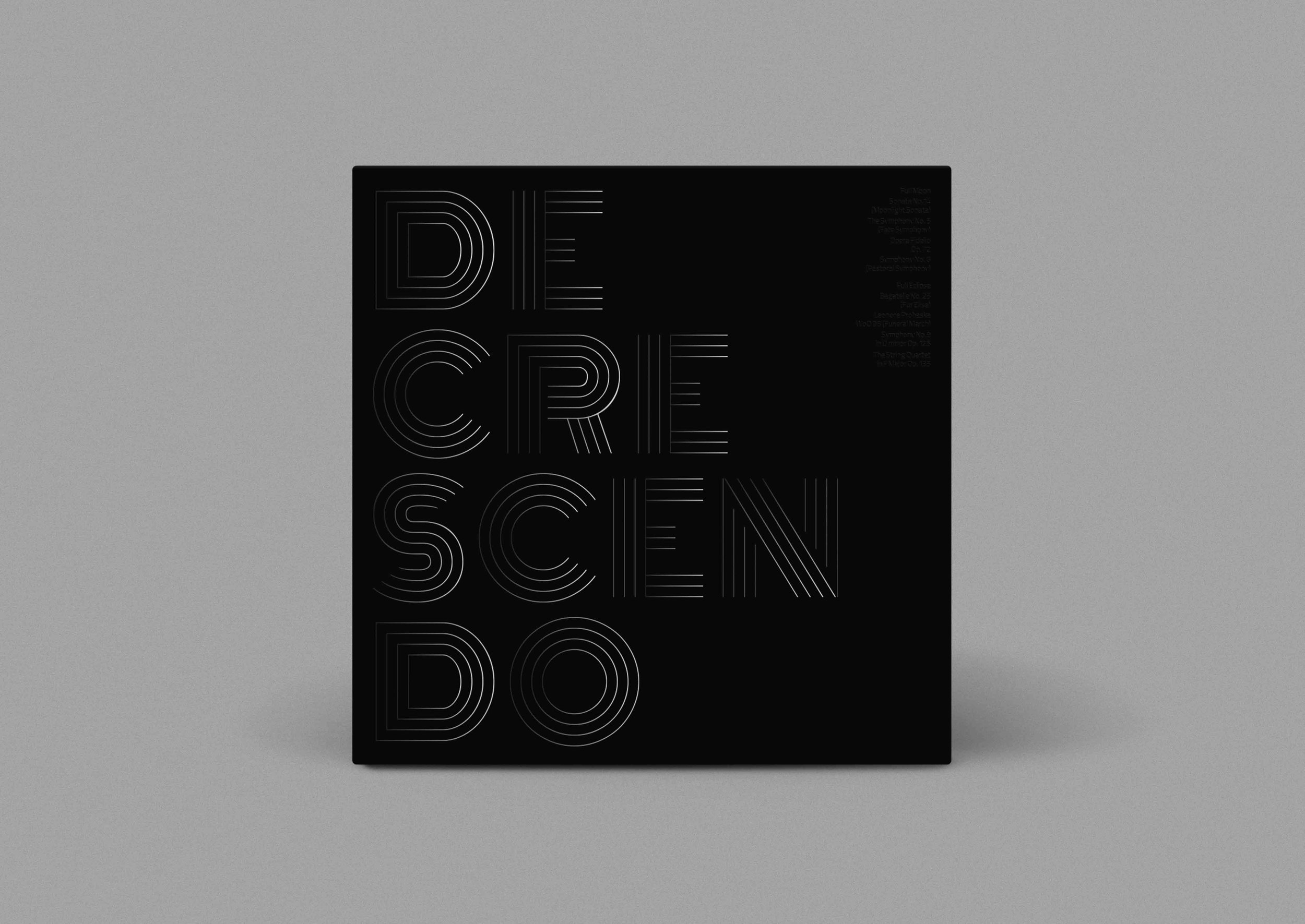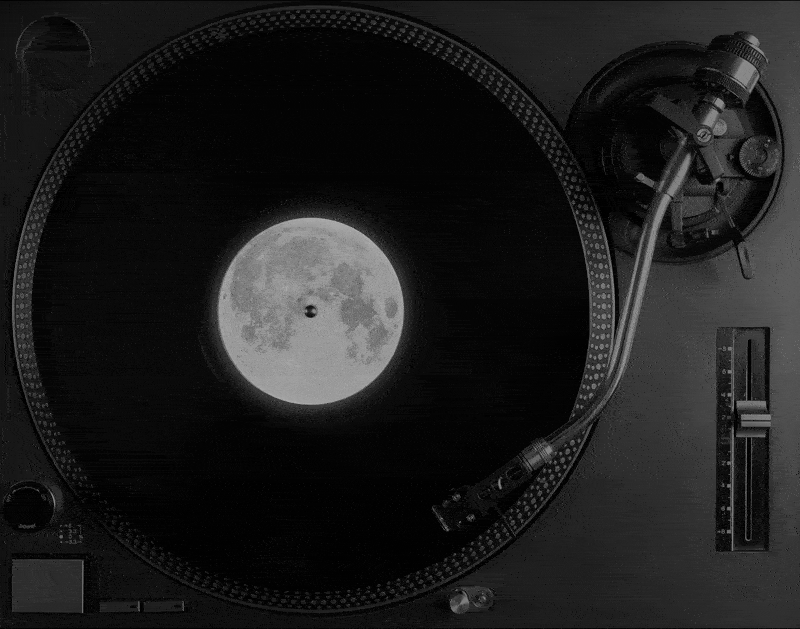
Decrescendo
Decrescendo is a visual study and album packaging design that explores the profound works of Ludwig van Beethoven during the transformative period of his hearing loss, ultimately leading to total deafness. This project features eight selected tracks, each representing a significant moment in Beethoven’s work during this transformative period. This project invites viewers to explore the tension between sound and silence, loss and creation, and the transformative power of artistic expression in the face of adversity.

The title and icon of Decrescendo on the cover symbolize the gradual fading of sound, reflecting Beethoven's transition from hearing to silence. Inspired by the decrescendo symbol in sheet music, which signifies a decrease in volume, this motif underscores the central theme of diminishing sound.
The audio spectrum of each track in the album is digitally visualized and presented in a circular format. These visualizations, accompanied by the track names and their years of creation, are prominently featured in the booklet and the accompanying poster, enhancing the packaging with a detailed representation of Beethoven's works.






The design concept of the gatefold revolves around the theme of an eclipse. It begins with Sonata No. 14 (Moonlight Sonata) from 1801, marking the onset of Beethoven's hearing loss, and concludes with the final track, String Quartet in F Major, Op. 135 from 1826, symbolizing the moment he completely lost his hearing and representing the full eclipse.

For the packaging sleeve design, The Heiligenstadt Testament is featured—Beethoven's 1802 letter to his brother in which he conveys his deep frustration with his worsening hearing loss. This letter marks a pivotal moment in Beethoven's life and work, representing the start of what he called his "New Path," a courageous and transformative period in his music.
Instructor: Paul Kepple
Tyler School of Art and Architecture, Temple University 